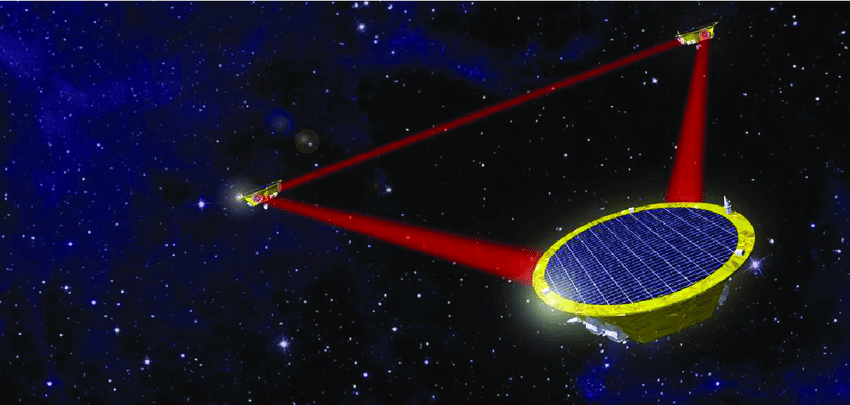LISA & LISA-NL
LISA
In the mid-2030s, the European Space Agency (ESA) will launch the first space detector for gravitational waves: the Laser Interferometer Space Antenna (LISA).

Credit: Astrium GmbH
Gravitational waves are ripples in the fabric of space, mainly caused by massive objects such as neutron stars and black holes orbiting around each other. Similar to dancing swans in a pond, but in three dimensions. The more massive the celestial bodies and the faster their orbit, the more powerful the gravitational waves become. Right before a collision, they spin around each other most rapidly, sometimes resulting in gravitational waves powerful enough to detect.
LISA consists of three spacecraft that monitor their mutual distance with laser beams. When that distance starts fluctuating, the detector knows a gravitational wave is passing through. LISA will be sensitive enough to even notice fluctuations in space on a scale of one to a sextillion at certain wavelengths. With LISA's arms this translates to variations of a few picometers. This is necessary because the currently undetected supermassive black holes are billions of lightyears away, so their gravitational waves are attenuated as they arrive in our Solar System.
LISA will be chasing Earth in its orbit around the Sun, more than fifty million kilometers behind. With its arms of 2.5 millions kilometers, LISA will be able to measure waves with much longer wavelengths than the ground-based detectors such as LIGO and Virgo. This allows it to listen to supermassive black holes of millions of solar masses orbiting around each other, producing long wavelengths. LIGO and Virgo are only sensitive to collisions between stellar black holes and neutron stars at a mere distance of tens of millions of lightyears, because the corresponding short wavelengths match their relatively short detector arms. Also waves from the deep Universe have long wavelengths, such as those from the chaotic epoch right after the Big Bang and from the first seeds of supermassive black holes.
LISA-NL
LISA-NL is a Dutch consortium consisting of SRON, Nikhef (both NWO institutes), TNO and scientists from the universities of Amsterdam, Groningen, Leiden, Maastricht, Utrecht and the Radboud University. The consortium is led by Prof. Gijs Nelemans (SRON/Radboud) and Prof. Elena Maria Rossi (Leiden University), who are also members of the international LISA science team. LISA-NL provides hardware and software for LISA. See the sections Technology and Science for the Dutch contributions.
